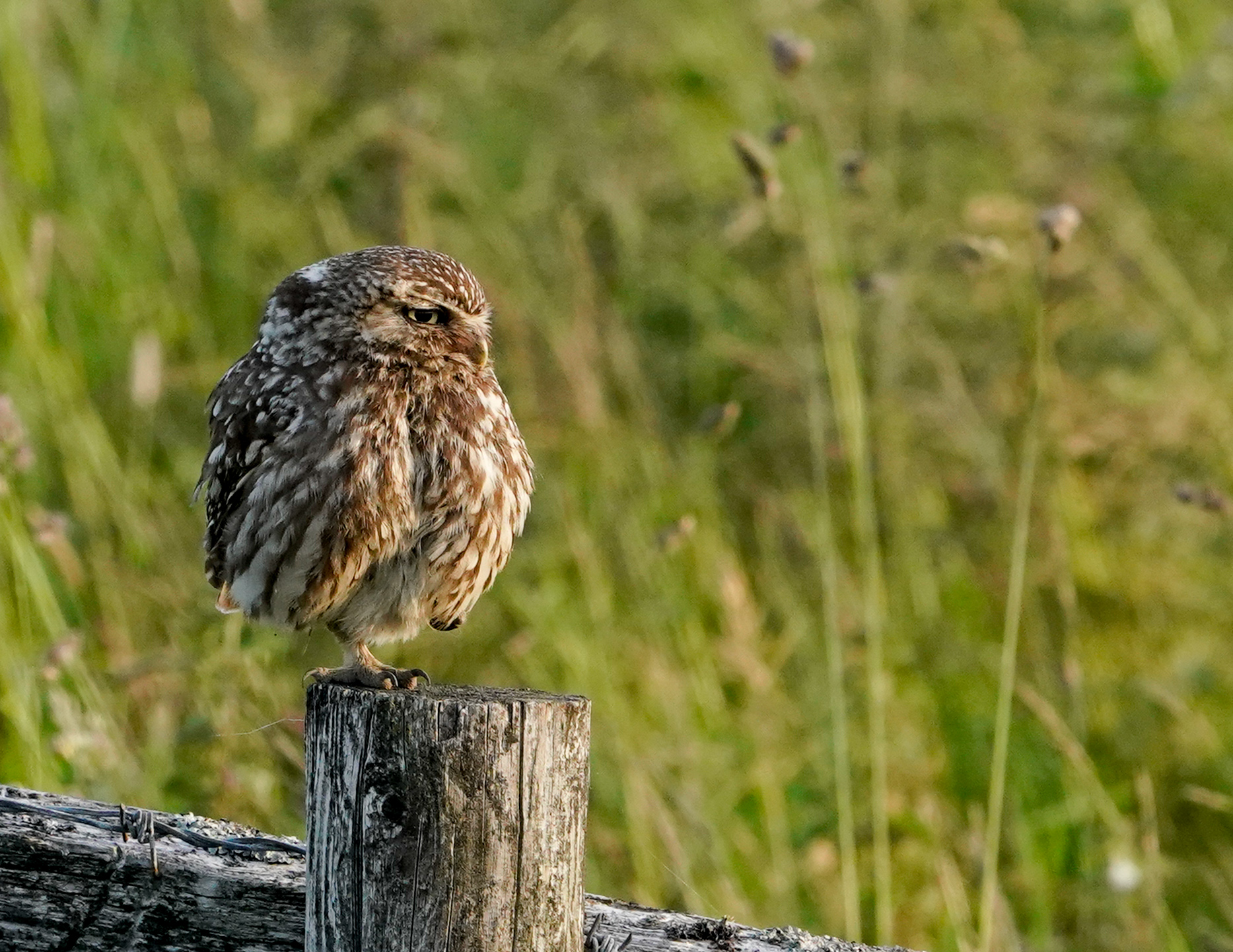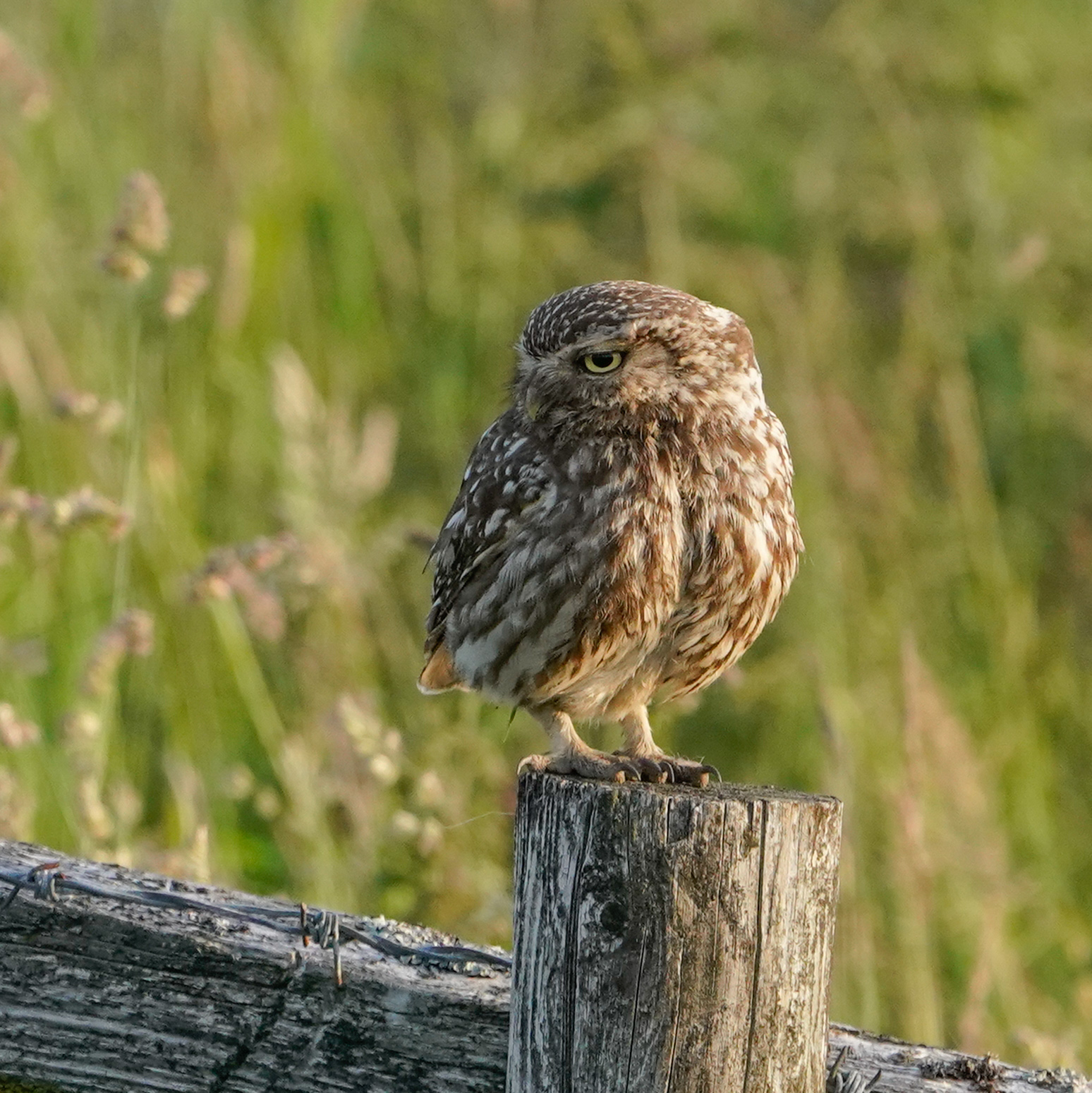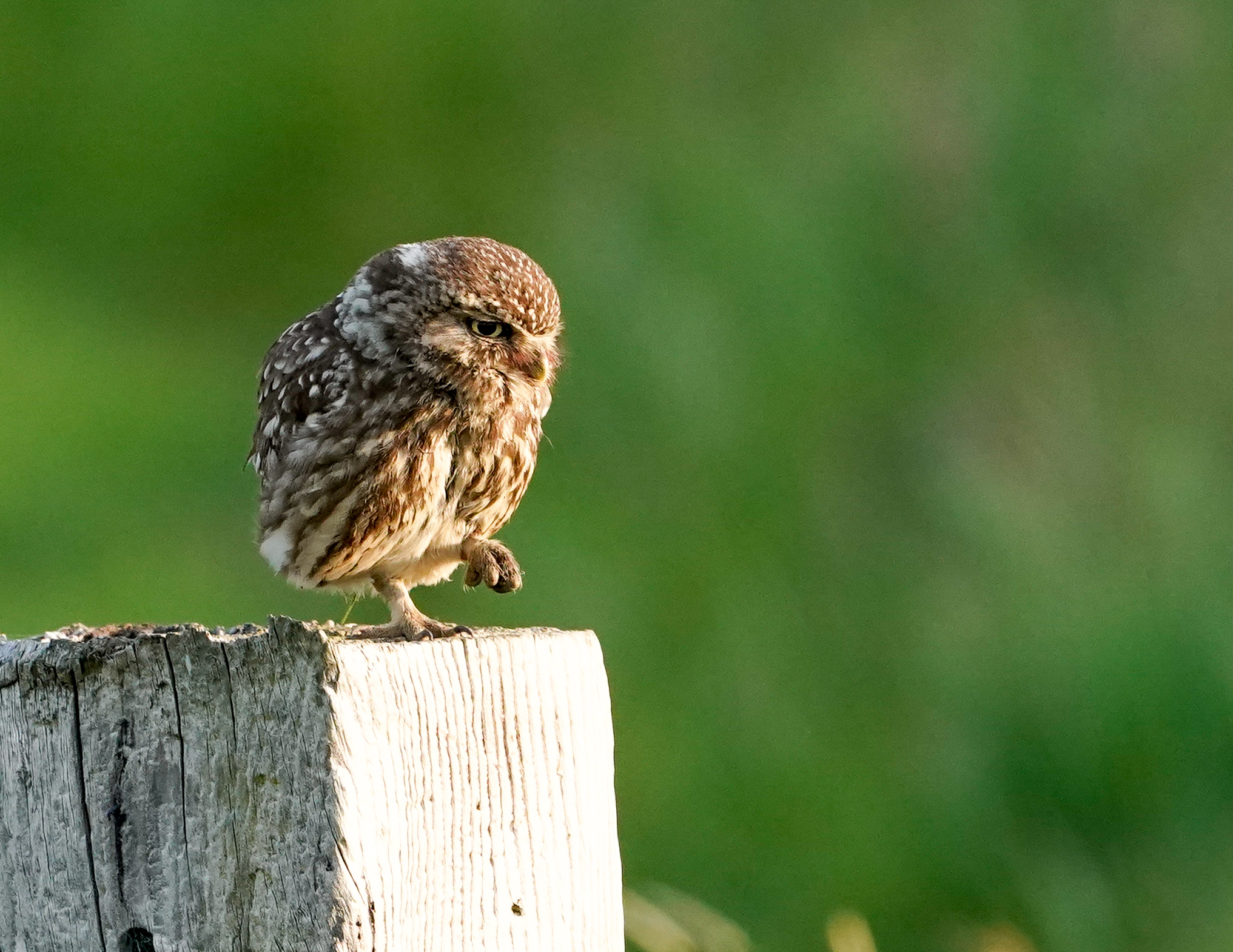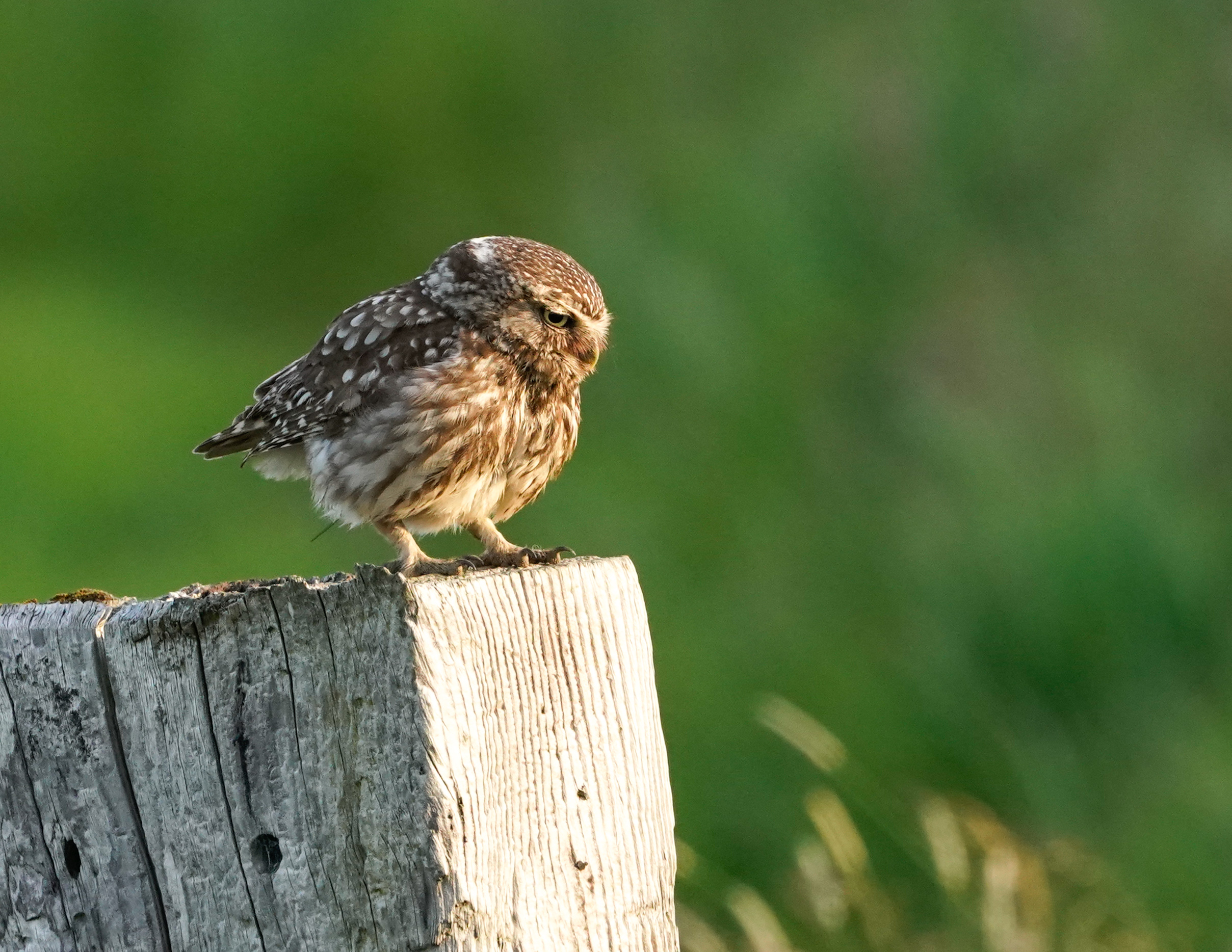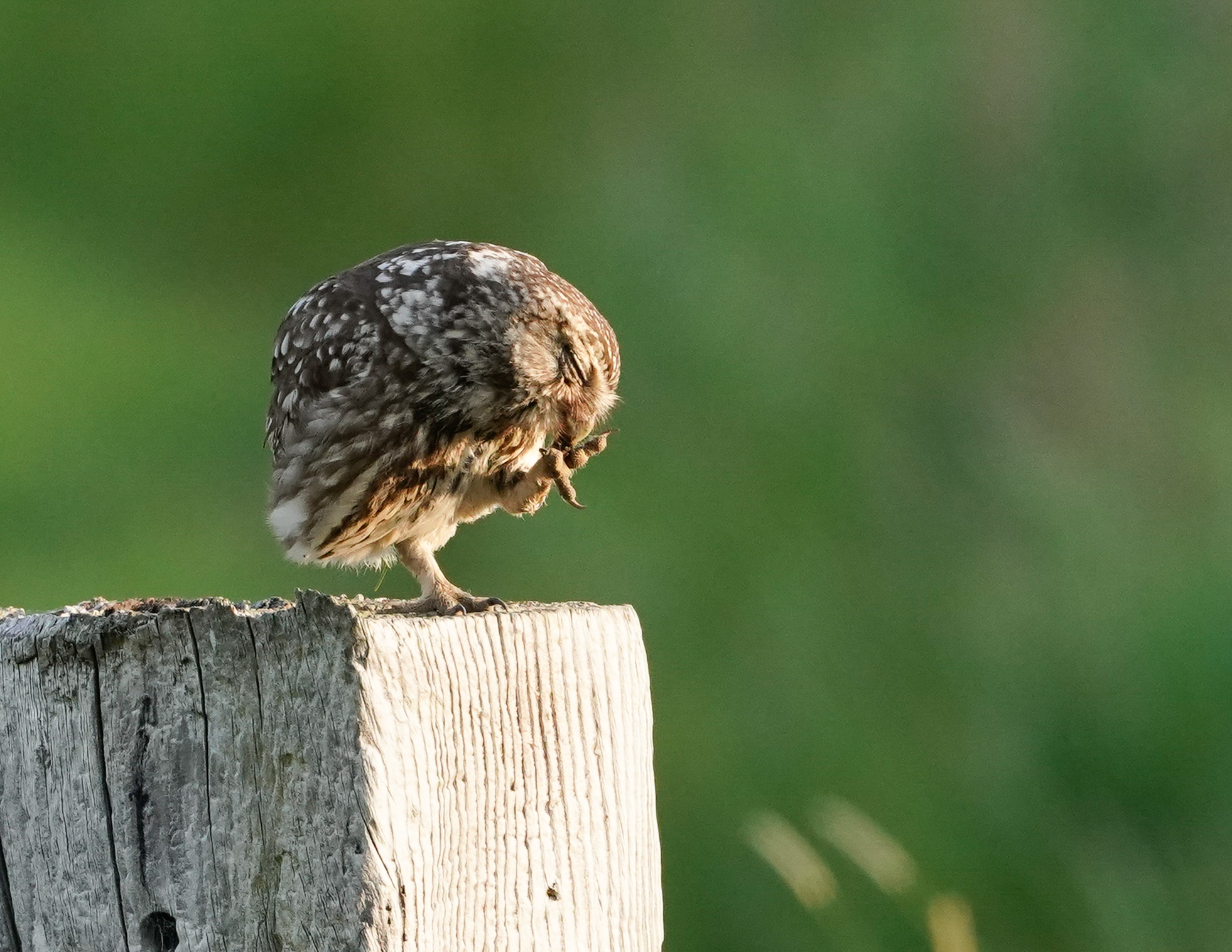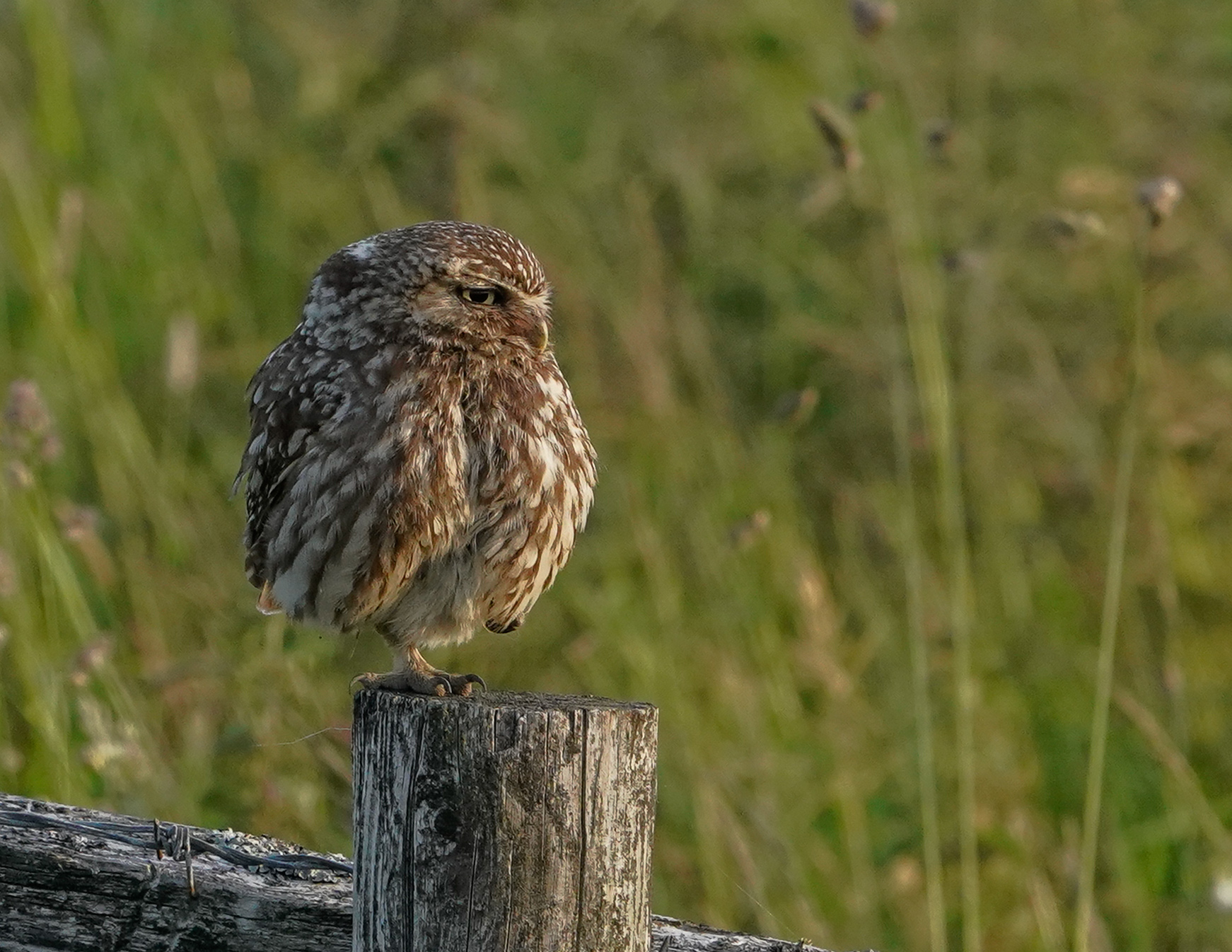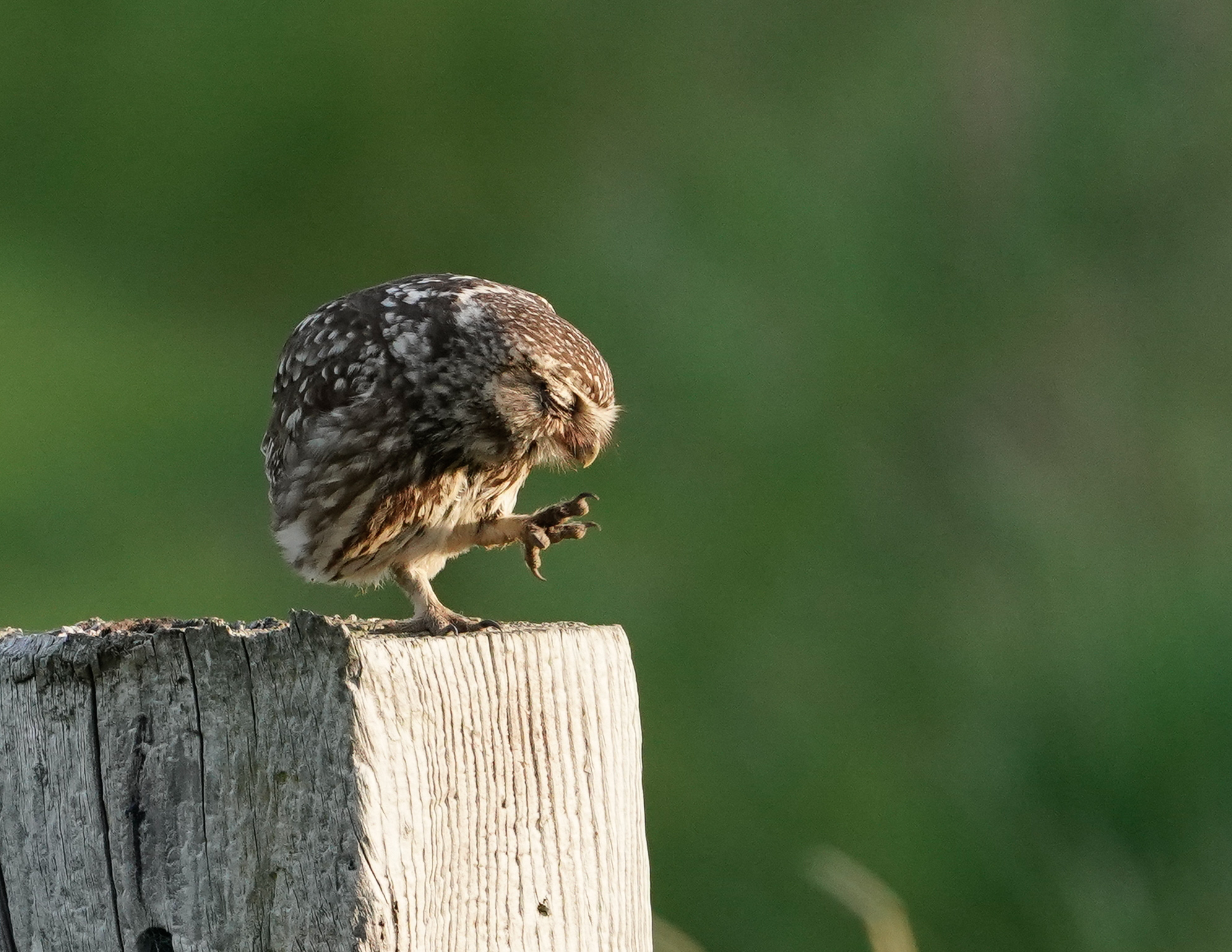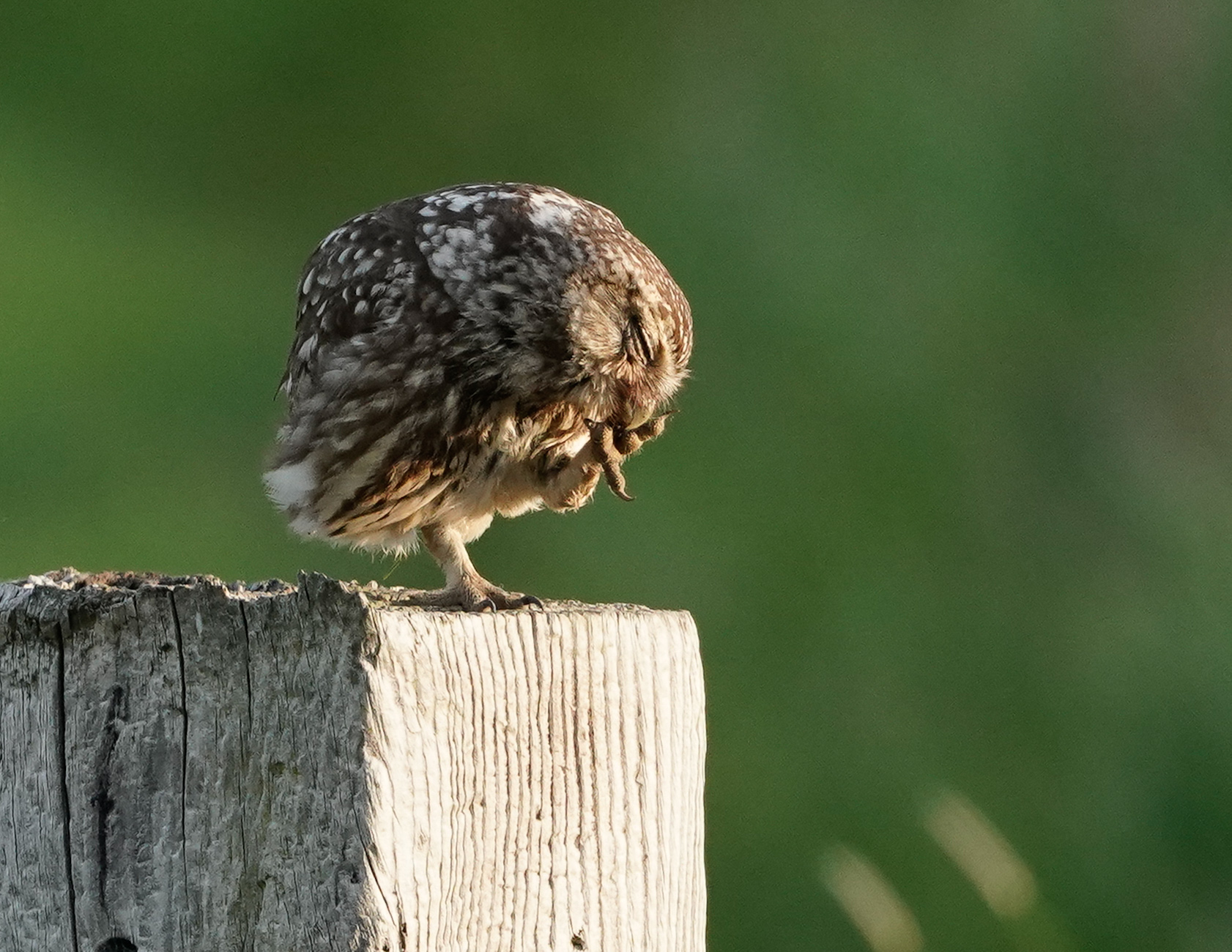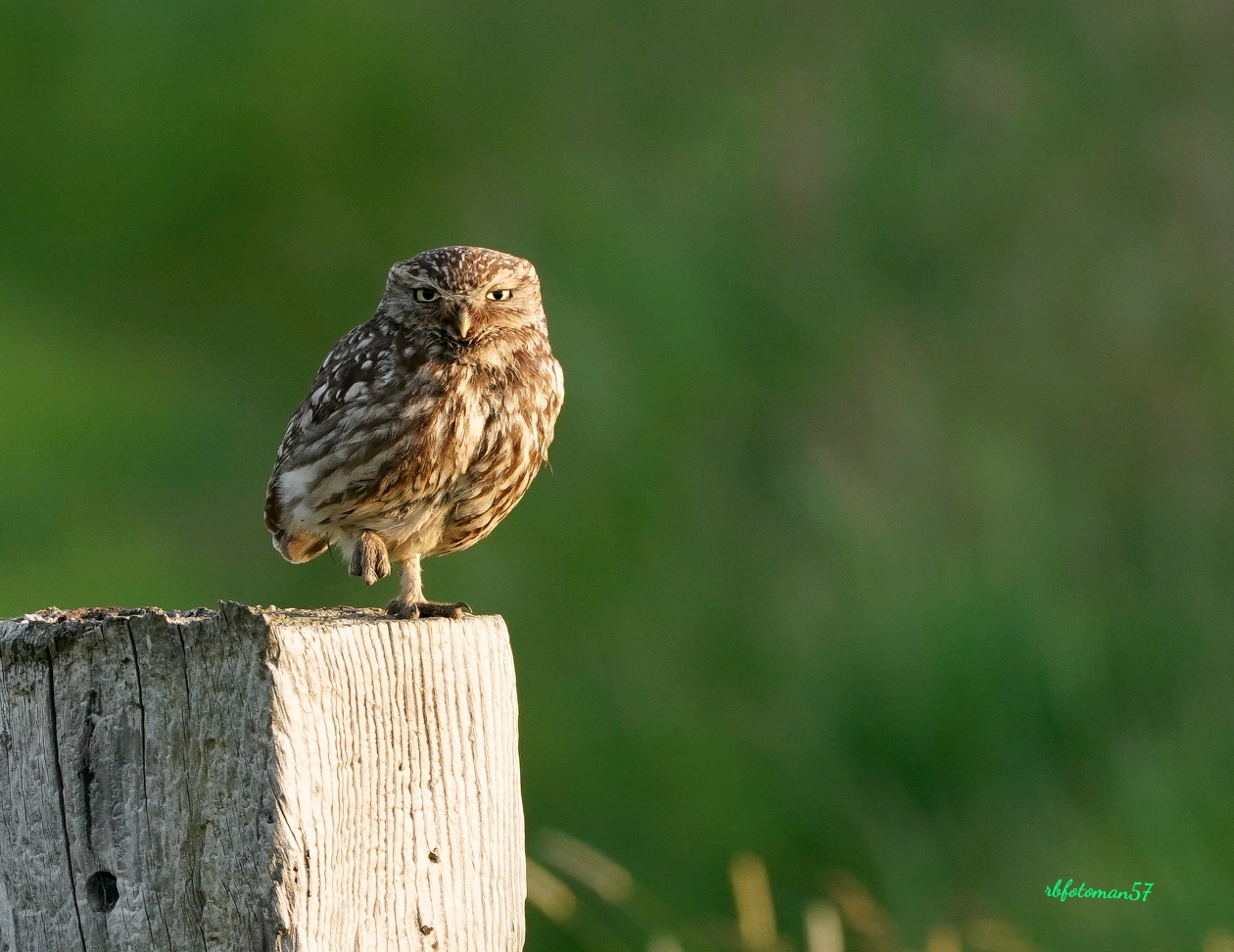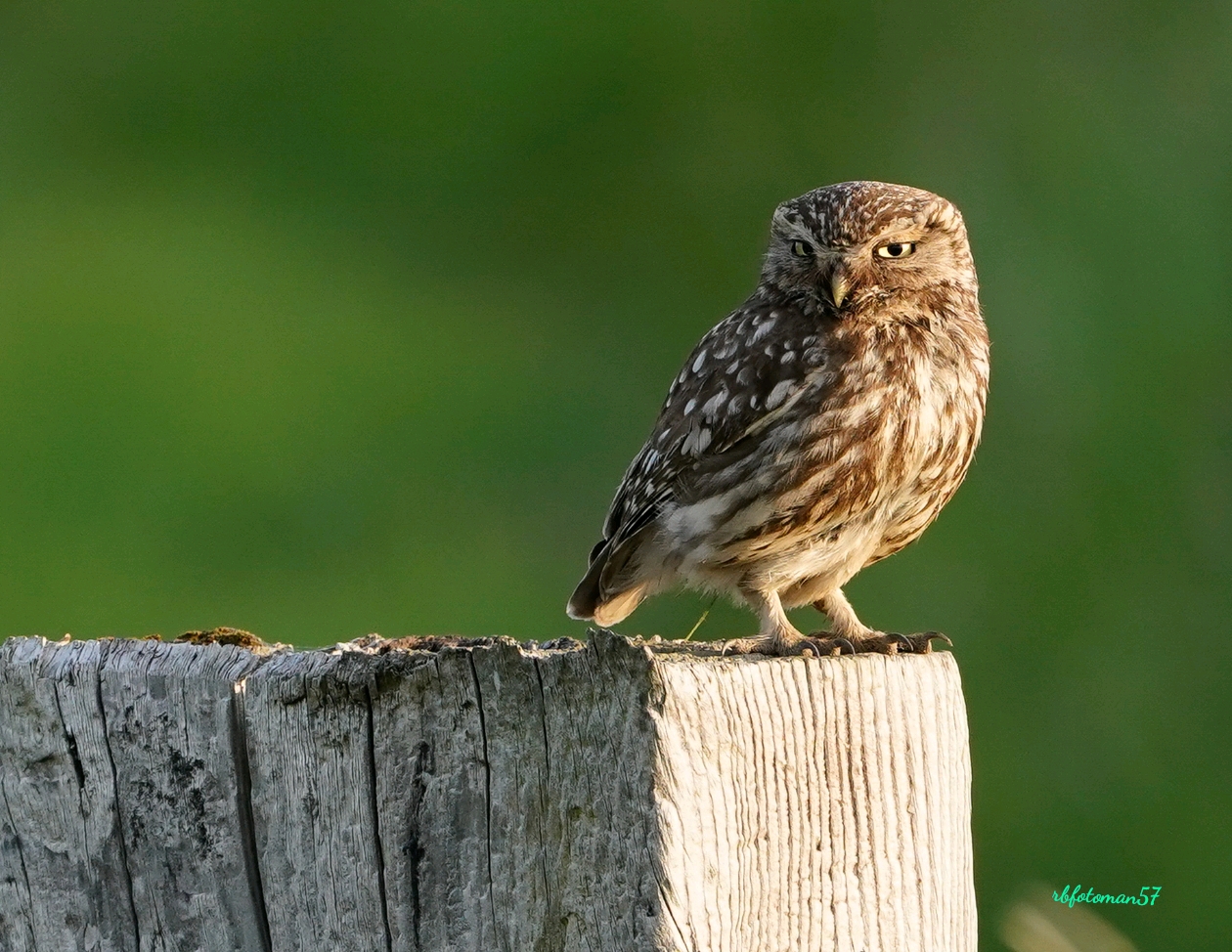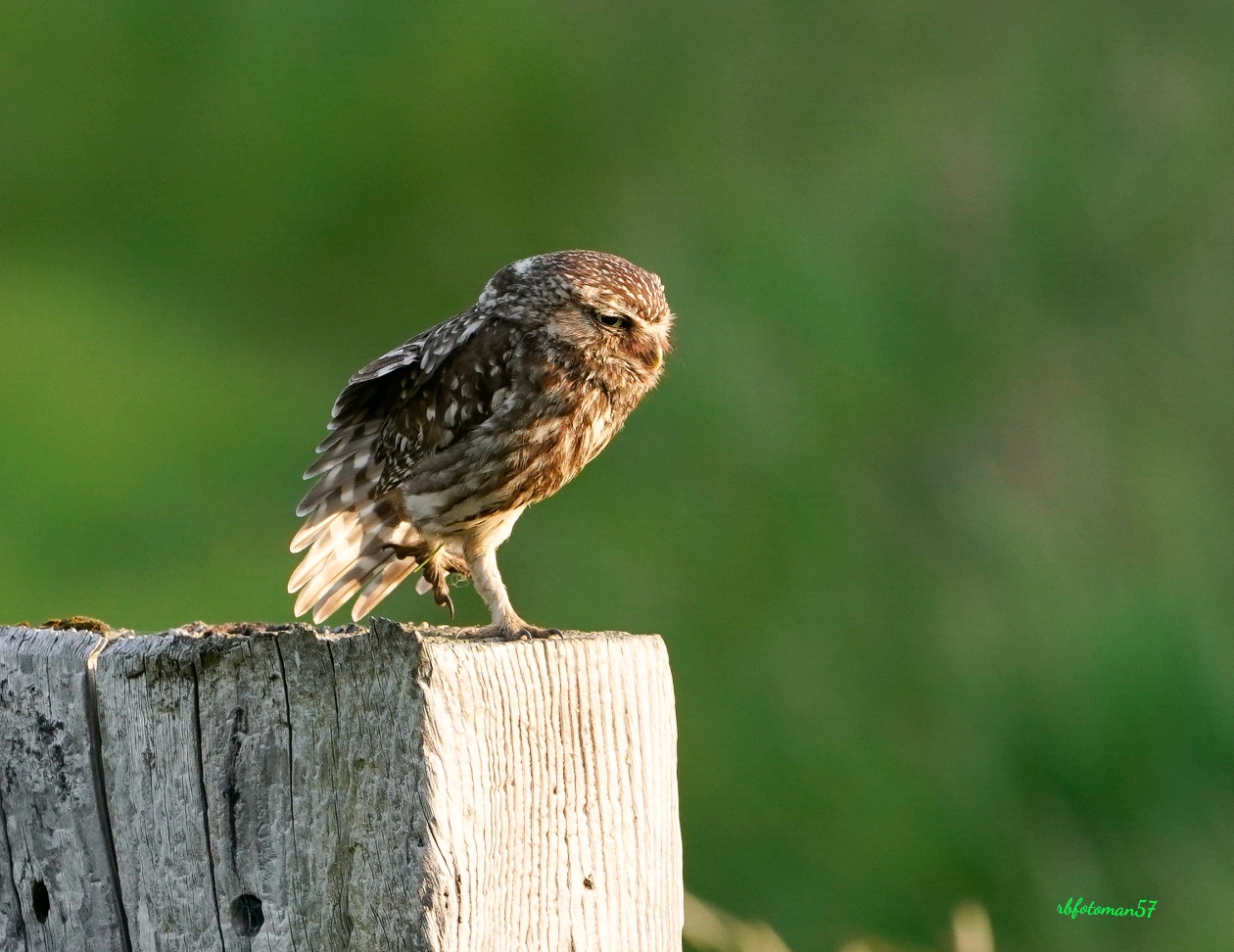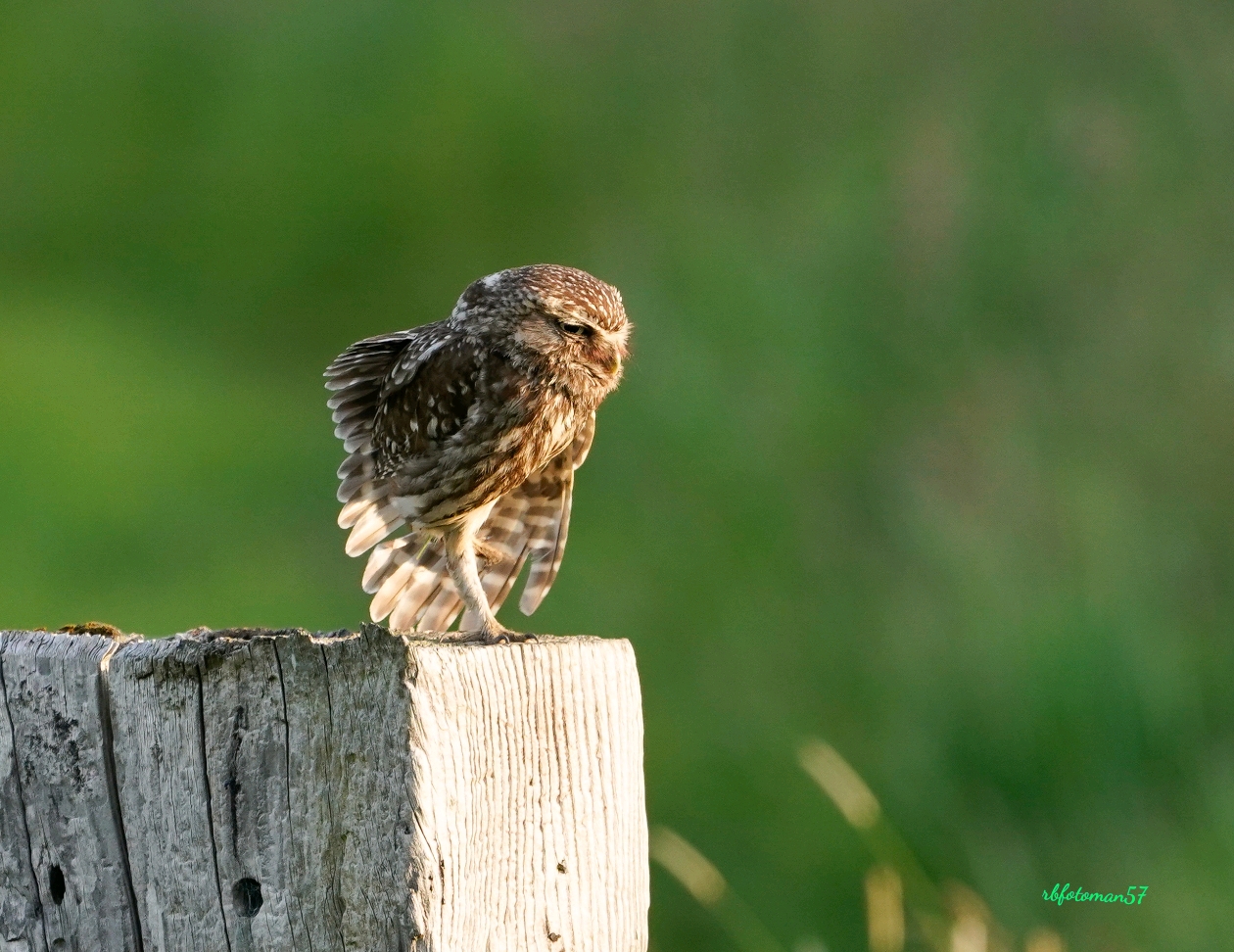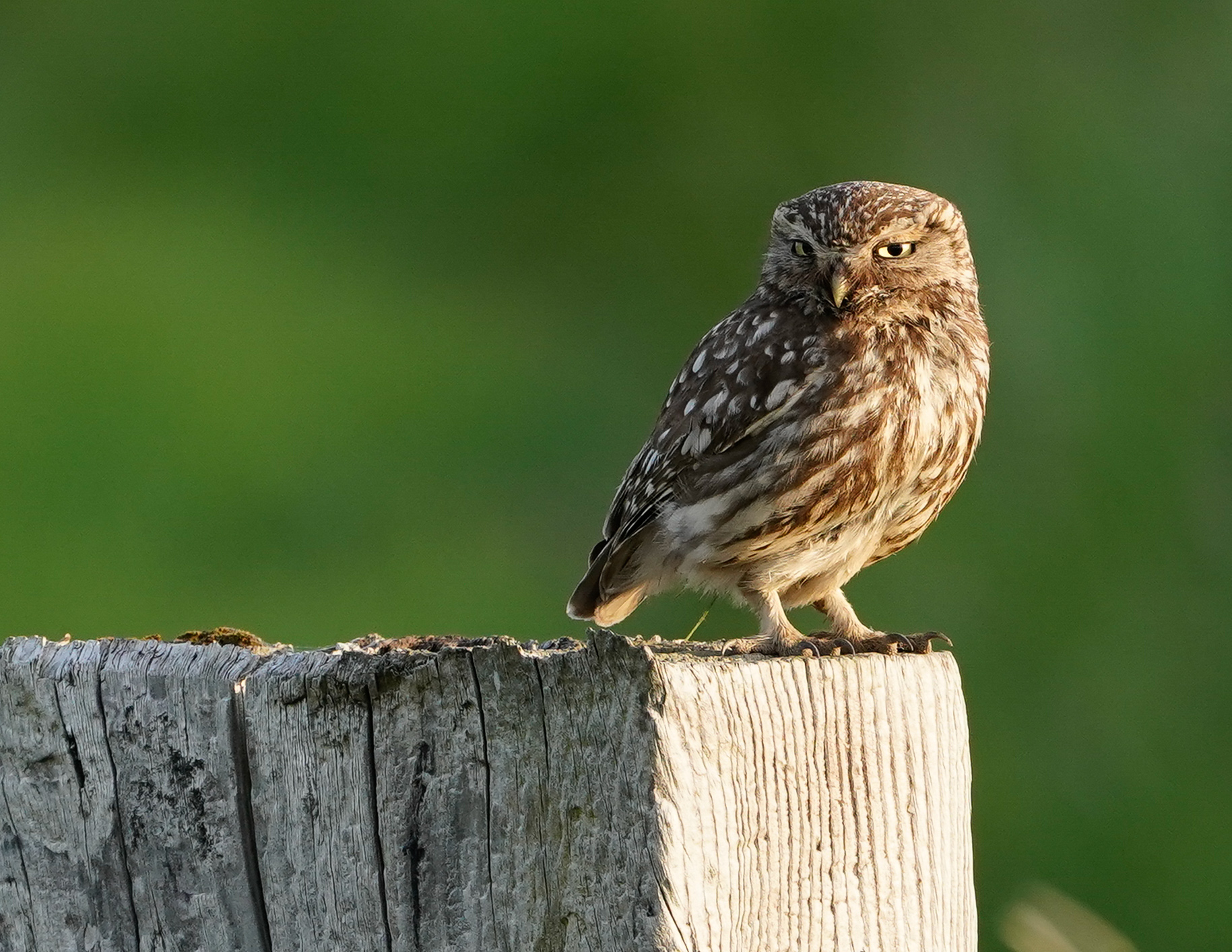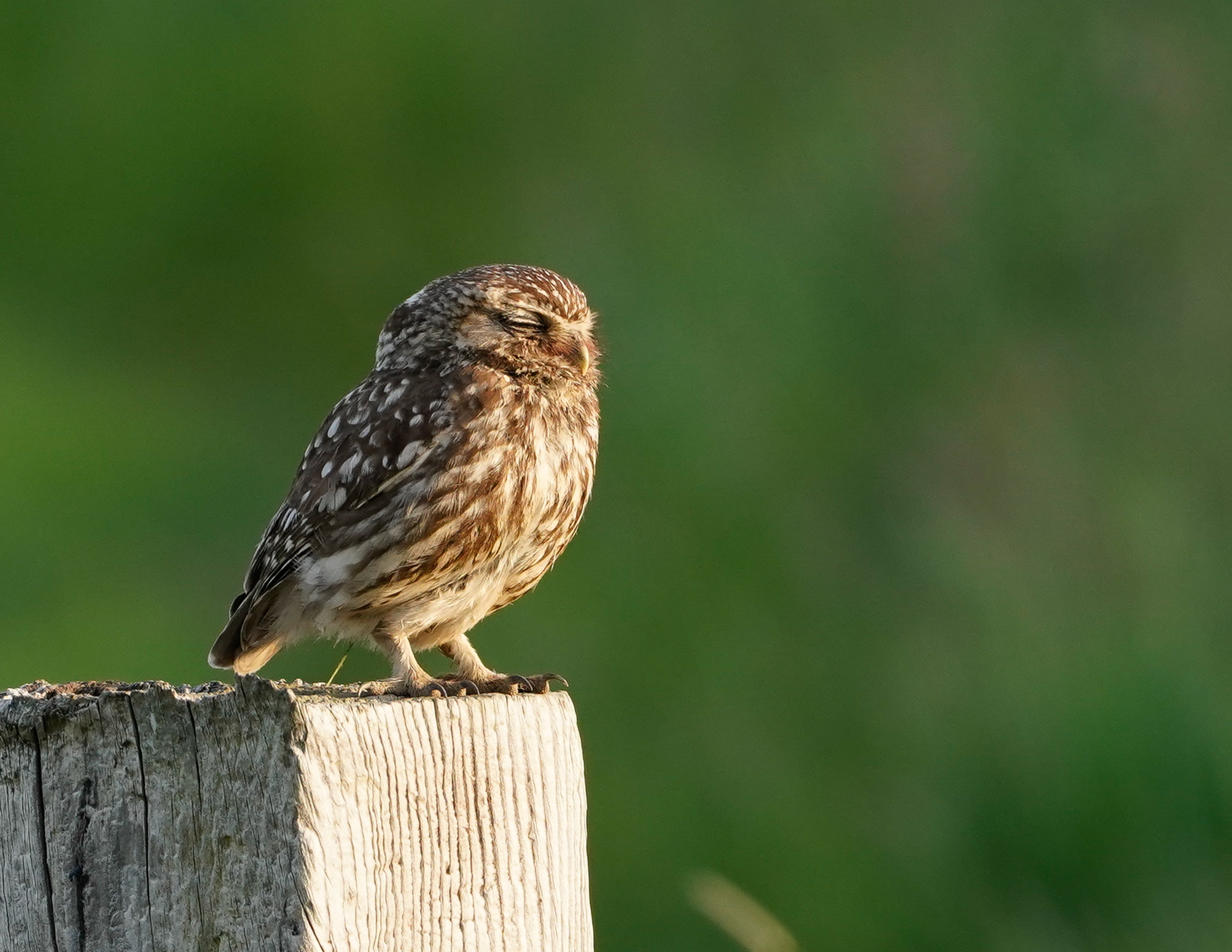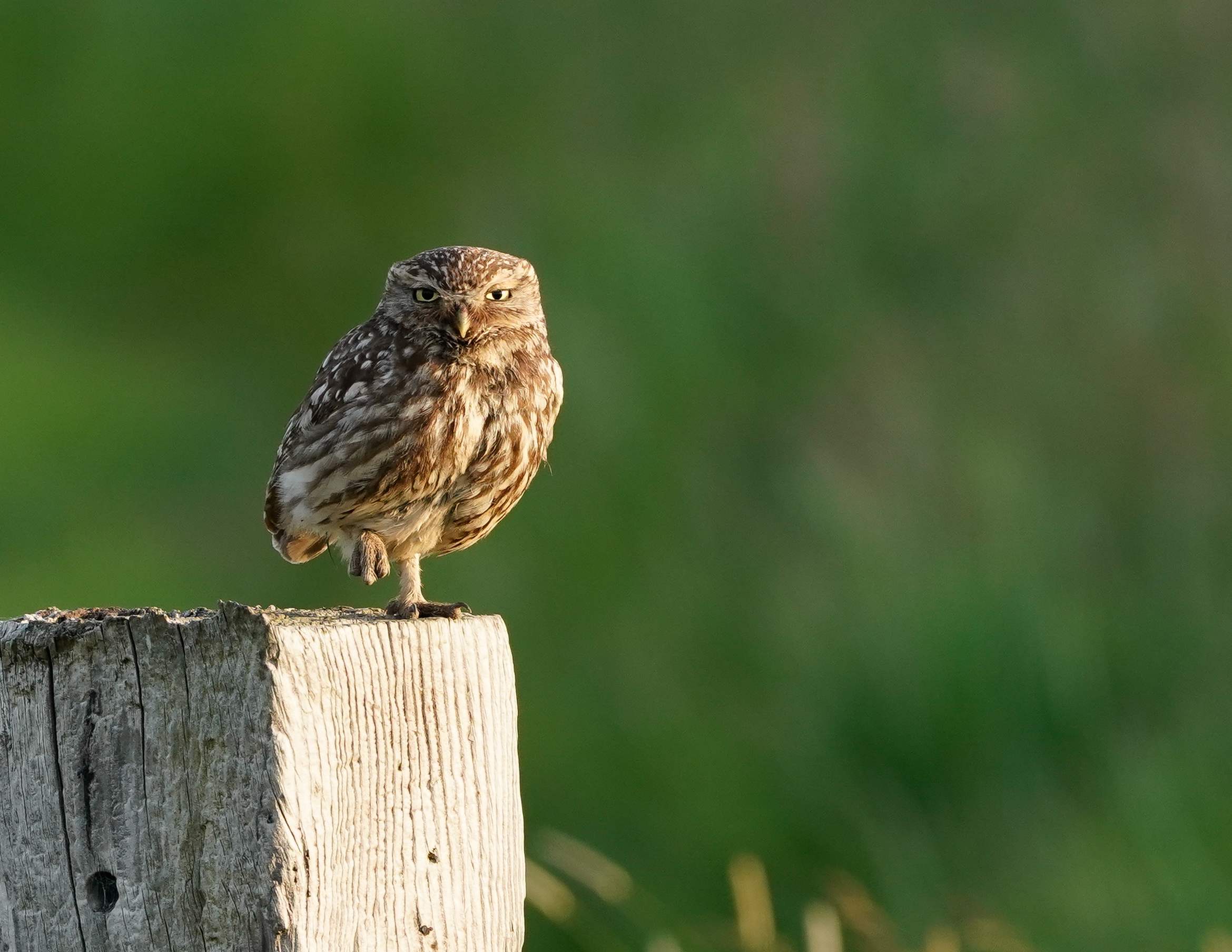So I drive somewhere different this morning, and watch the Rabbits, Brown Hare, Curlew, Oystercatcher, Skylark and Meadow Pipit all starting the new day. I come to a dead end and sit and look over a valley imaginings of Barn Owl, Short Eared Owl flying low looking for food for the young Owlets. I am so appreciated of the beauty of the English countryside.
Hundreds of hours of searching 11 years with just a few sightings and always sitting in a gutter or hiding in a small crevis. This bird has alluded me for 11 years. So I start to drve back to my resting place, windows down camera on my lap. The stone wall runs alongside me on both sides, my eyes are trained to locate anything out of the ordinary.
I stare ahead and whisper the words Little Owl, please stay calm and let me spend some time with you, I bring you no harm my little Owl.
I stopped the car and slowly raise my lens up hoping it won’t fly away. Most encounters end with the Owl flying away before you stop, but this day was mine, the hours of dedication rewarded in a brief moment in time. The right time, place, my heart starts to race as our eyes meet through my viewfinder. I stare at the Owls face its eyes fixed on me.
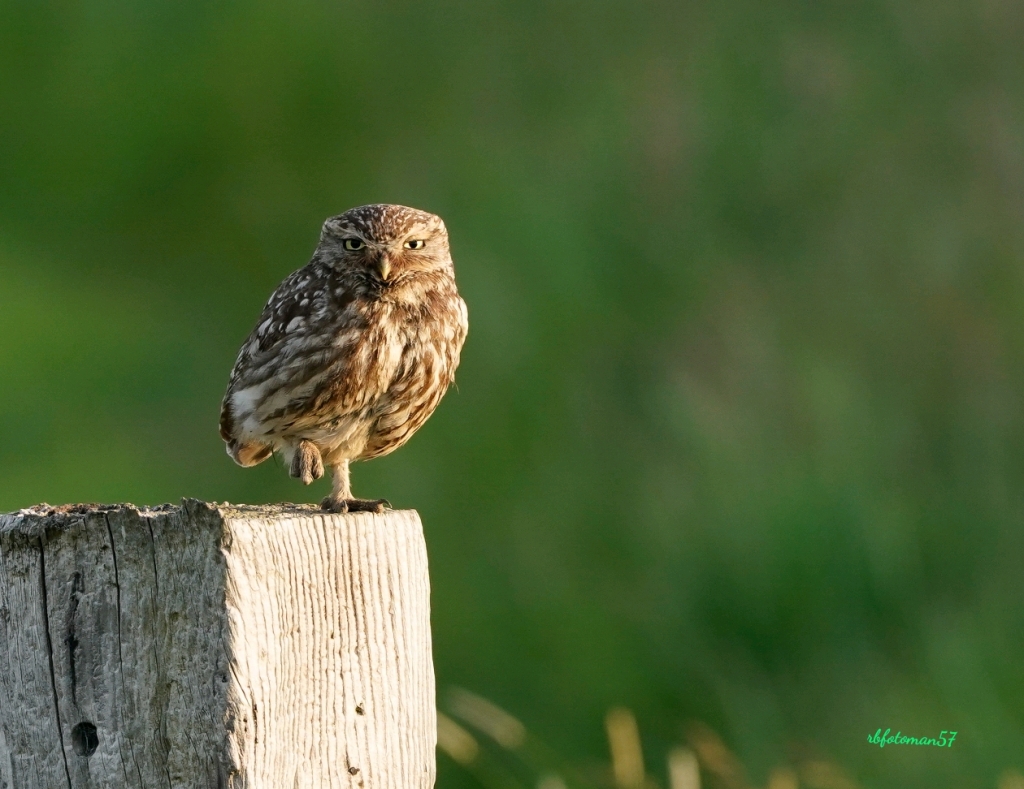
The sight of this fantastic hunter, amazing ability to adapt and overcome the changing climate. It sits with one foot up showing me its relaxed so I calm down a bit and have time to check my settings, they have to be right so I change my aperture 6.3 to 7.1 up to f8. Then I 5hink of Shutter speed just In case it moves or does something out of the ordinary.
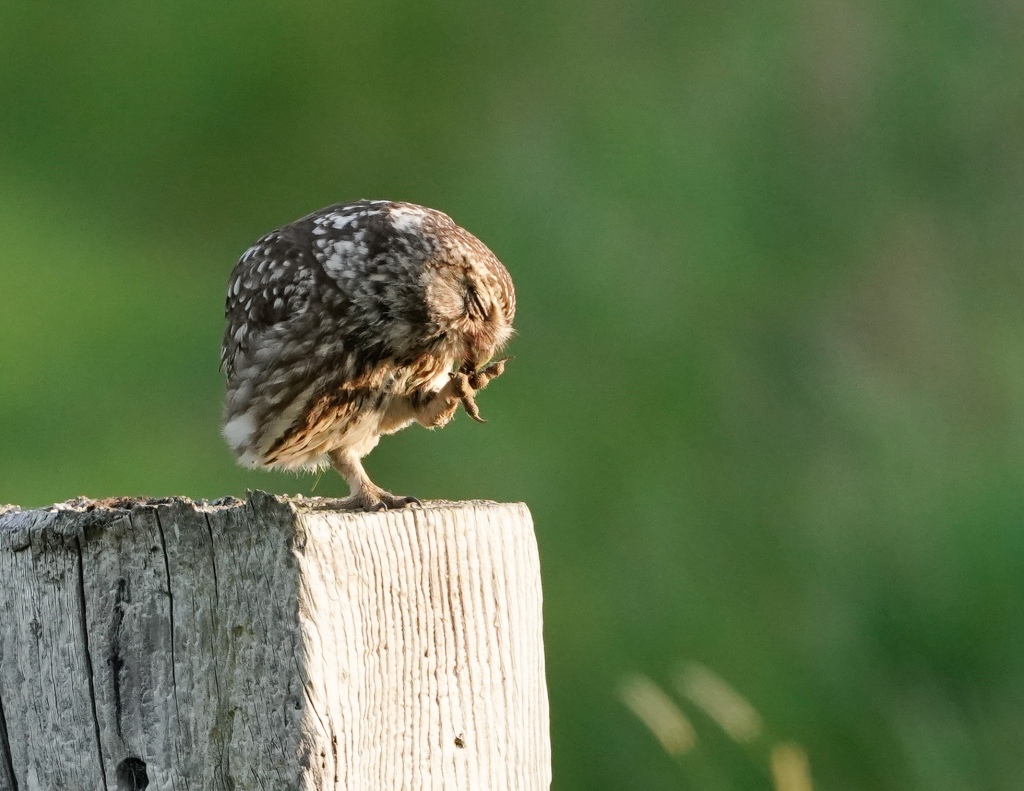
The experience is overwhelming and I forget all what’s going on around me. It preens in the morning sun not bothered about me. My Shutter is blazing away, stopping checking all is OK on my viewfinder. 11 years of waiting they have to be good. Then it decides to stretch.
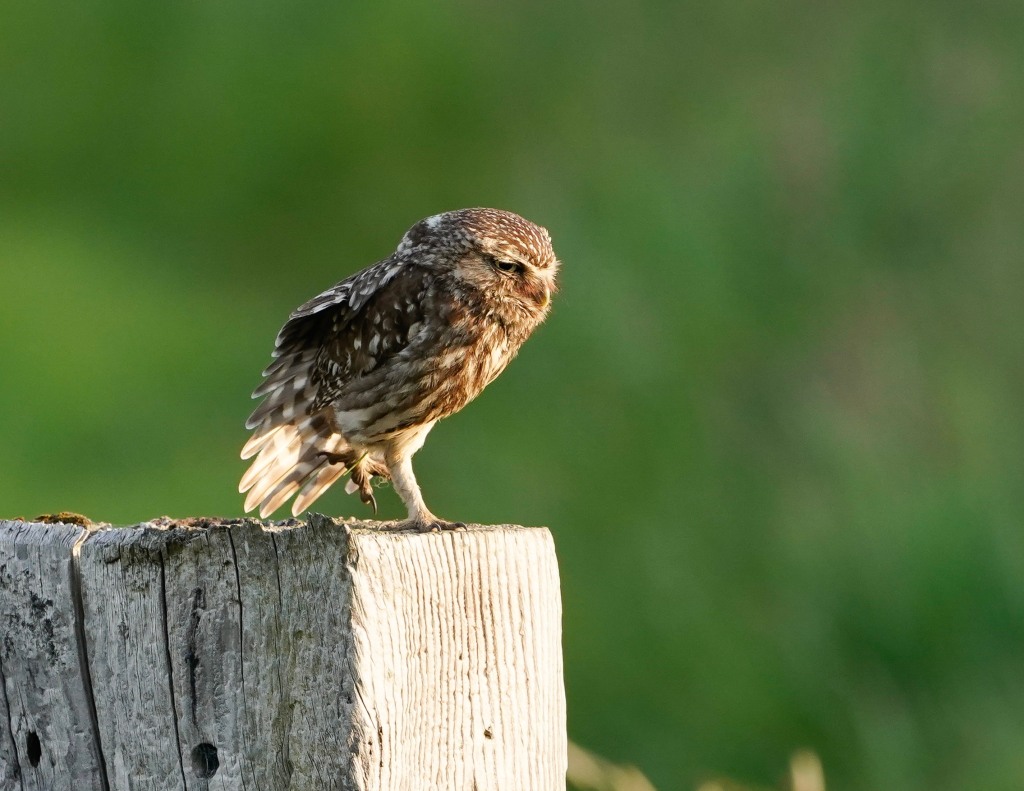
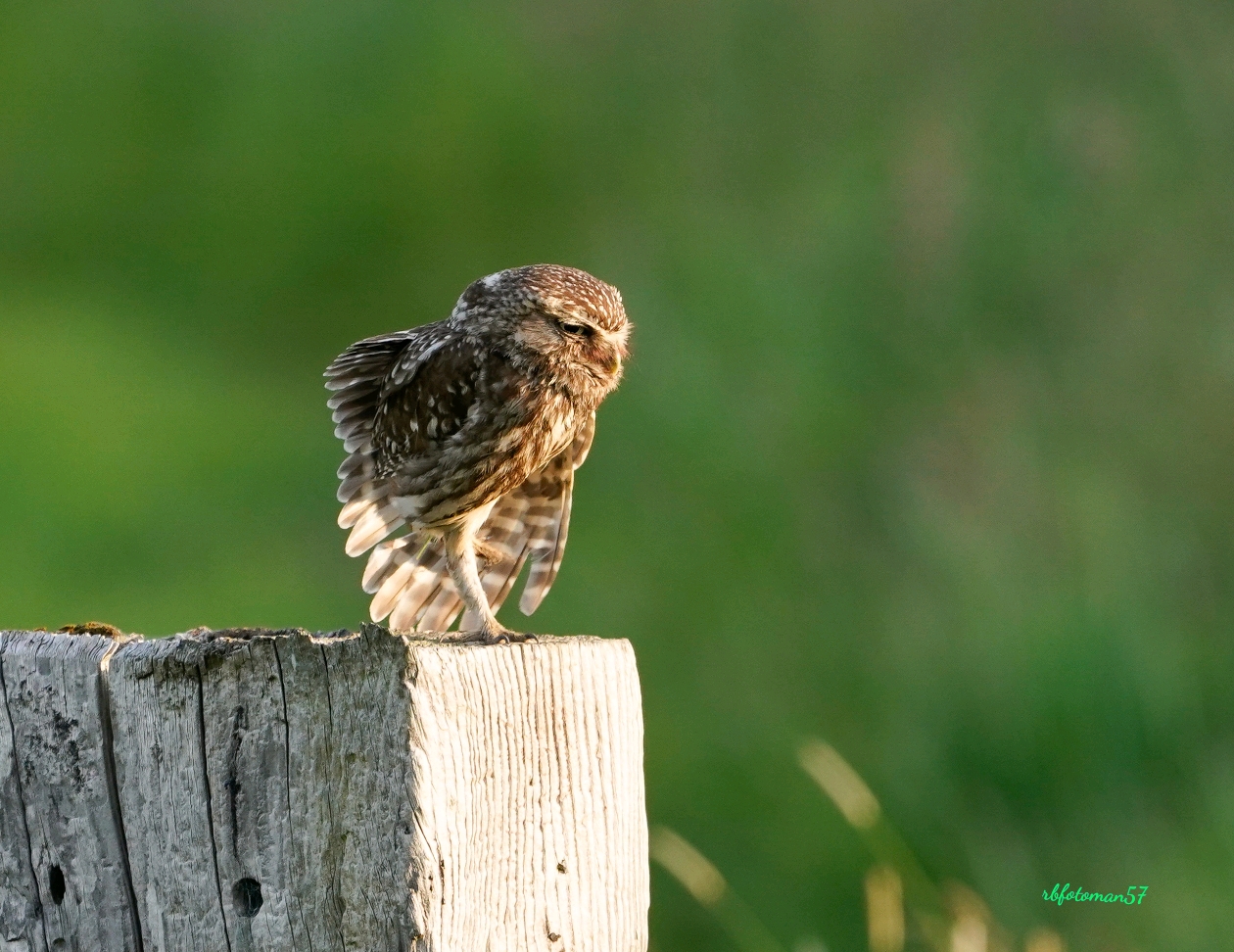
So I fly for you and sit for you, its your time Blackie it was worth the wait.
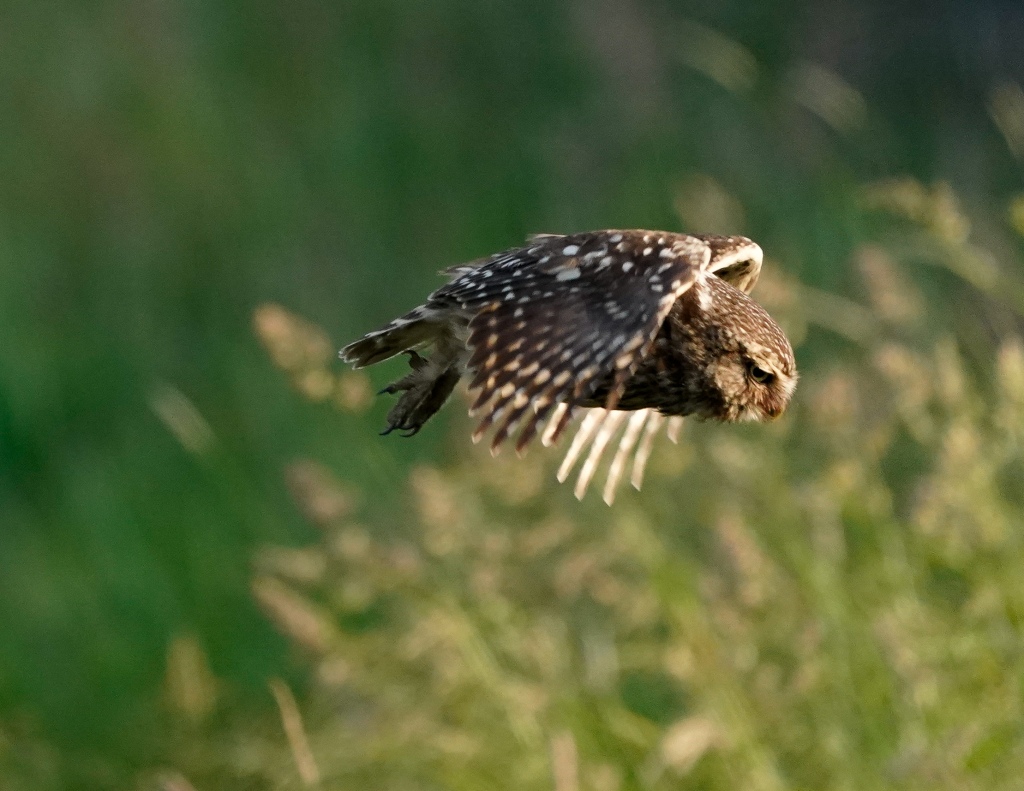
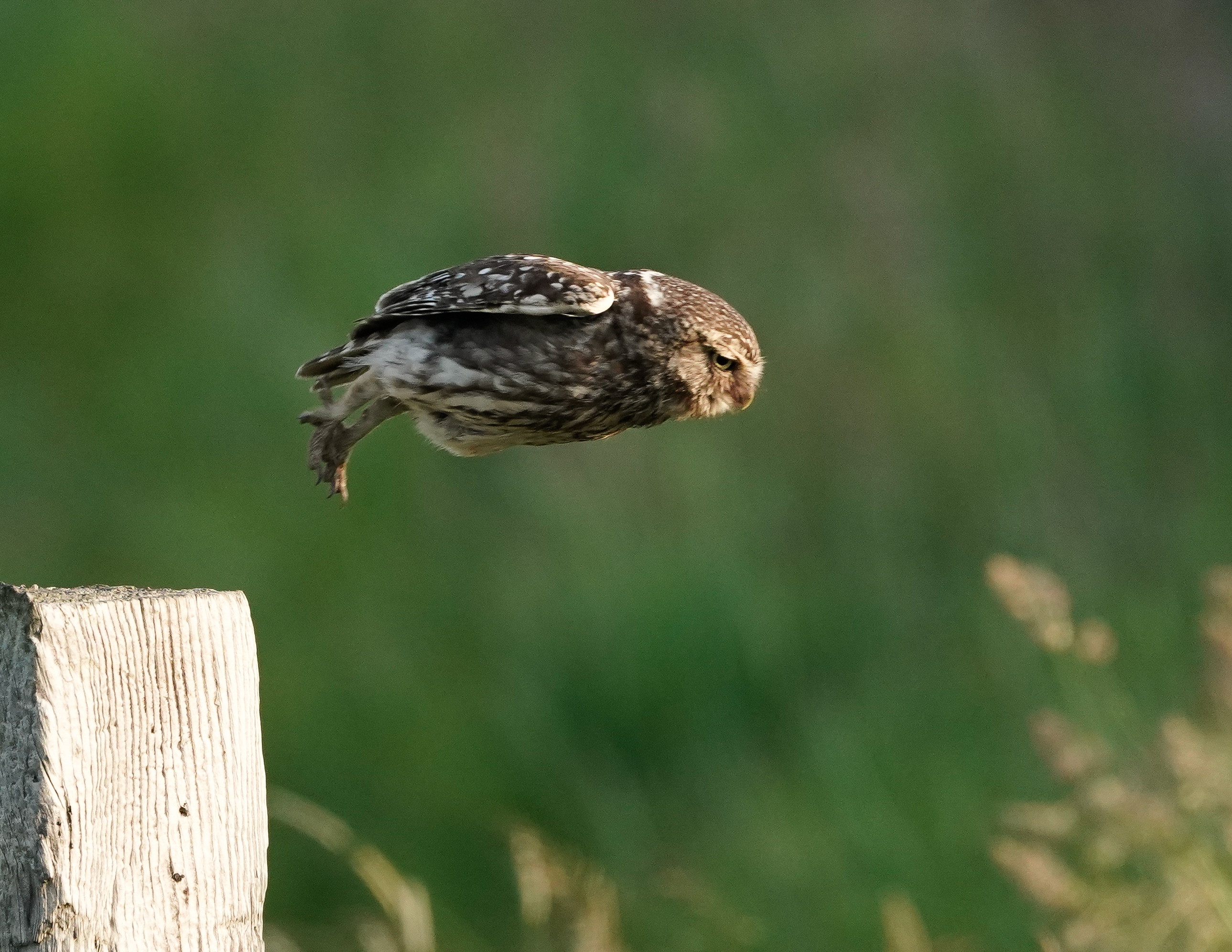
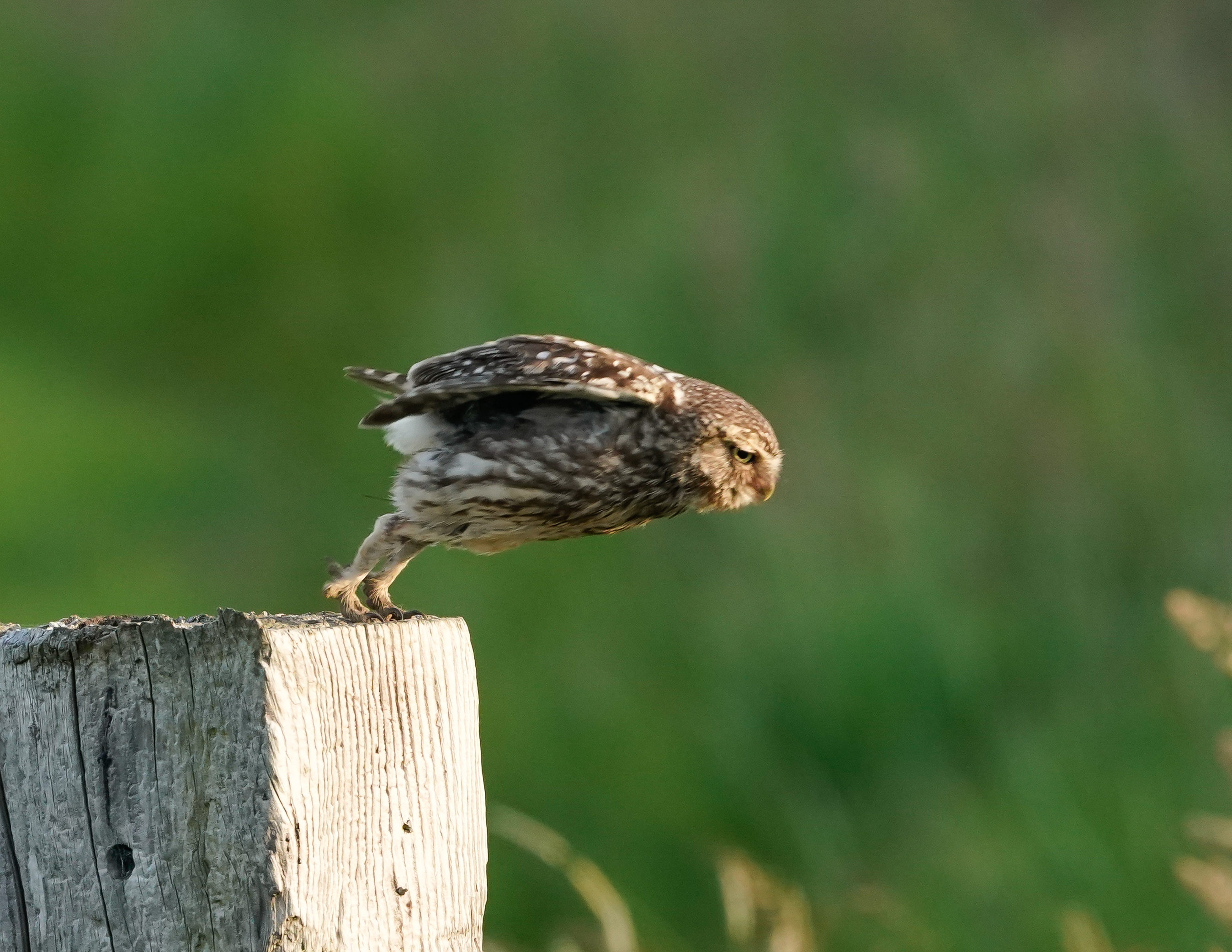
So Blackie and the Little Owl meet in the countryside and spend some quiet time together for the first time. 495 images later he decides to leave the Owl in peace, maybe to return for another meeting.
